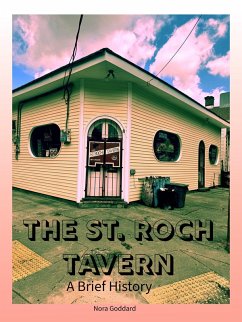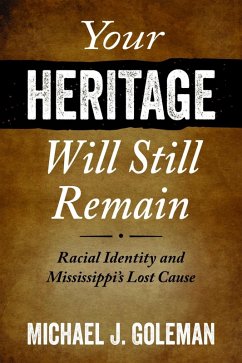
Public Housing, Gentrification and Cultural Heritage (eBook, ePUB)

PAYBACK Punkte
0 °P sammeln!
Here is provided an overview of several of New Orleans original "Big Four" housing projects, such as St. Thomas and Iberville, with a comparison to the later, larger scale housing projects such as the Desire and Florida developments. The early, WPA-era public housing was constructed on relatively high ground, and in dense walkable districts. As property values rose, developers deployed a number of strategies to displace those occupying the now-coveted sites. After Hurricane Katrina devastated the city in 2005, these strategies moved forward full force, and nearly all residents were displaced. ...
Here is provided an overview of several of New Orleans original "Big Four" housing projects, such as St. Thomas and Iberville, with a comparison to the later, larger scale housing projects such as the Desire and Florida developments. The early, WPA-era public housing was constructed on relatively high ground, and in dense walkable districts. As property values rose, developers deployed a number of strategies to displace those occupying the now-coveted sites. After Hurricane Katrina devastated the city in 2005, these strategies moved forward full force, and nearly all residents were displaced.
In the wake of disaster, when the city of New Orleans announced they intended to demolish almost all the remaining public housing, there was an enormous public outcry. Community groups staged protests, but ultimately, the cause was lost. All of the projects in question are now gone, with the exception of a few lone boarded up buildings left as architectural examples. The final chapter in the saga of American public housing is its' sly conversion to mixed-income housing, with a rarely-fulfilled promise to replace the affordable units demolished to make way for new construction. A reflection is due to the loss, not only of the housing crisis, but of the importance of these prominent parts of our built environment. The public housing developments are intrinsically linked with New Orleans' history and the struggles of working class and Black folks here. The privatization of public housing has transformed it from a social service to an amalgamation of the real estate, contracting, and investment industries. It is designed to enhance the resources of these industries, not to serve citizens.
It is crucial to the historic fabric of our city that we preserve not just the impressive, beautiful buildings, but those occupied by working class citizens as well. After all it is these people that created the unique culture we have here in New Orleans. Historic affordable housing units may not be luxurious enough to appeal to market rate buyers, but that is not what their original intent was. They have been praised by architects such as Andres Duany, as well as by many of the people who have lived in them. The projects built in the 1930's and 40's were solid and well-constructed, and withstood many disasters since then, not just Katrina. The difference, of course, is that past disasters were not manipulated to accommodate some of the most brutal urban renewal projects America has ever seen.
In the wake of disaster, when the city of New Orleans announced they intended to demolish almost all the remaining public housing, there was an enormous public outcry. Community groups staged protests, but ultimately, the cause was lost. All of the projects in question are now gone, with the exception of a few lone boarded up buildings left as architectural examples. The final chapter in the saga of American public housing is its' sly conversion to mixed-income housing, with a rarely-fulfilled promise to replace the affordable units demolished to make way for new construction. A reflection is due to the loss, not only of the housing crisis, but of the importance of these prominent parts of our built environment. The public housing developments are intrinsically linked with New Orleans' history and the struggles of working class and Black folks here. The privatization of public housing has transformed it from a social service to an amalgamation of the real estate, contracting, and investment industries. It is designed to enhance the resources of these industries, not to serve citizens.
It is crucial to the historic fabric of our city that we preserve not just the impressive, beautiful buildings, but those occupied by working class citizens as well. After all it is these people that created the unique culture we have here in New Orleans. Historic affordable housing units may not be luxurious enough to appeal to market rate buyers, but that is not what their original intent was. They have been praised by architects such as Andres Duany, as well as by many of the people who have lived in them. The projects built in the 1930's and 40's were solid and well-constructed, and withstood many disasters since then, not just Katrina. The difference, of course, is that past disasters were not manipulated to accommodate some of the most brutal urban renewal projects America has ever seen.
Dieser Download kann aus rechtlichen Gründen nur mit Rechnungsadresse in A, B, CY, CZ, D, DK, EW, E, FIN, F, GR, H, IRL, I, LT, L, LR, M, NL, PL, P, R, S, SLO, SK ausgeliefert werden.













